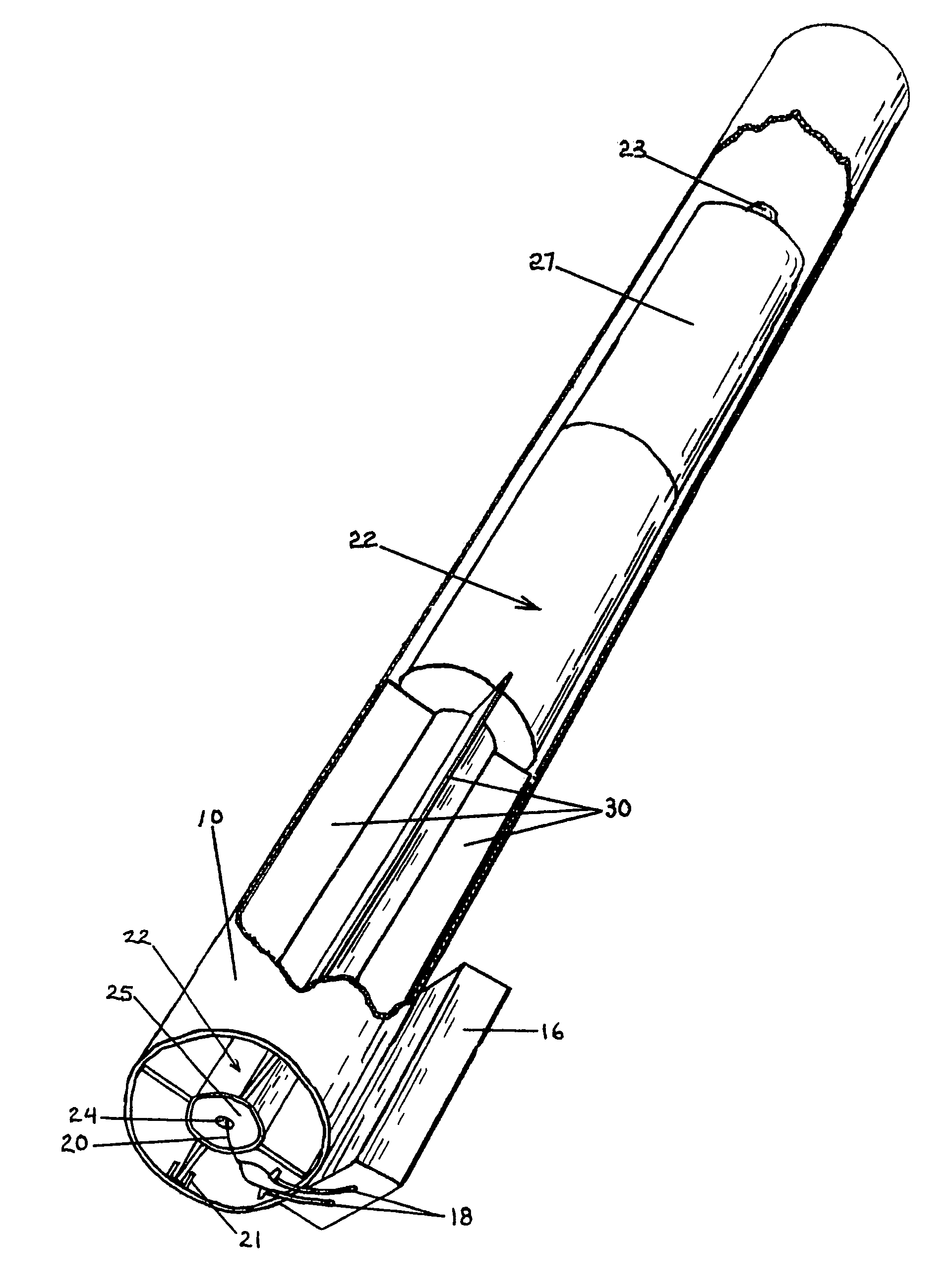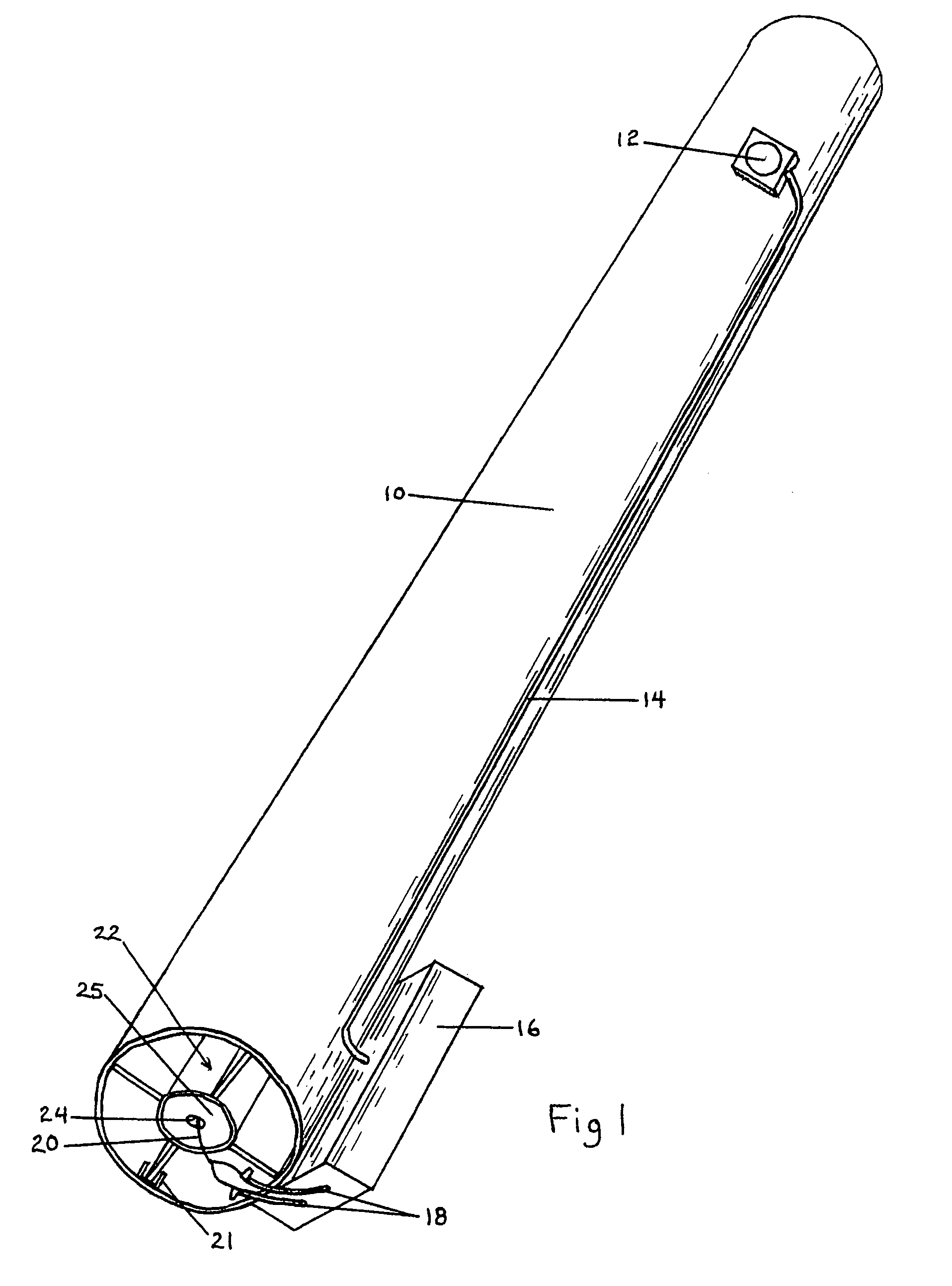Advanced unmanned aerial vehicle system
a technology of unmanned aerial vehicles and vehicles, applied in the field of advanced unmanned aerial vehicle systems, can solve the problems of inherently high vibration, limited range and payload capacity of rotary-wing aircraft, and achieve the effects of reducing their responsiveness, high degree of specialized training, and being readily available and quick to deploy
- Summary
- Abstract
- Description
- Claims
- Application Information
AI Technical Summary
Benefits of technology
Problems solved by technology
Method used
Image
Examples
Embodiment Construction
FIGS. 1-7—Preferred Embodiment
[0044]FIG. 1 shows a perspective view of a preferred embodiment of my UAV. In this basic version, a tube 10 is a container and a launcher for a rocket 22. The tube 10 is internally dimensioned to receive the rocket 22. A switch 12 is connected to a battery (not shown) in a battery holder 16 by firing switch wiring 14. A pair of electrical leads 18 connect the battery (not shown) in the battery holder 16 to an igniter 20 located in a rocket motor exhaust nozzle 24 at the aft end of a rocket motor 25. A stop 21 holds one of a set of four fins 30, securing the rocket 22 in the tube 10. (Note the large square area of the fins 30 which will be described at length below).
[0045]FIG. 2 is the same view as FIG. 1 with a cutaway revealing more of the rocket 22 including the extra large fins 30 and an aerodynamic feature 23 on the blunt nose.
[0046]FIG. 3 shows a perspective view of the rocket 22 with cutaways revealing a payload bay 26 in the payload section 27 an...
PUM
 Login to View More
Login to View More Abstract
Description
Claims
Application Information
 Login to View More
Login to View More - R&D
- Intellectual Property
- Life Sciences
- Materials
- Tech Scout
- Unparalleled Data Quality
- Higher Quality Content
- 60% Fewer Hallucinations
Browse by: Latest US Patents, China's latest patents, Technical Efficacy Thesaurus, Application Domain, Technology Topic, Popular Technical Reports.
© 2025 PatSnap. All rights reserved.Legal|Privacy policy|Modern Slavery Act Transparency Statement|Sitemap|About US| Contact US: help@patsnap.com



